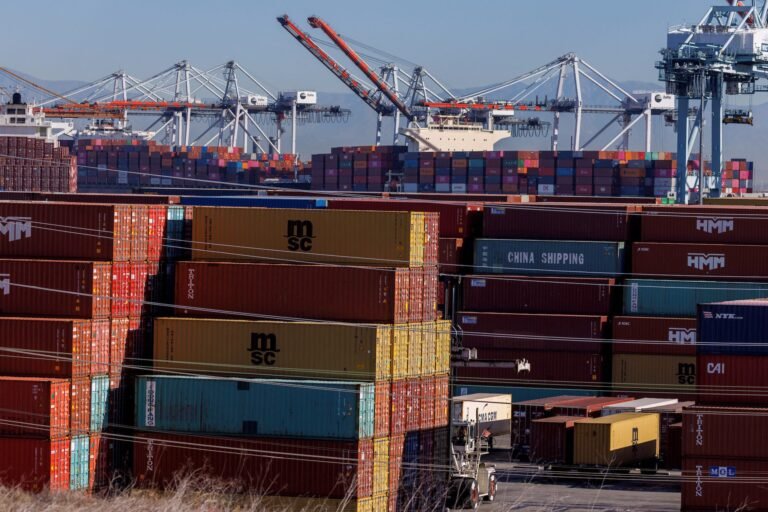By Lori Ann LaRocco – A key supply chain data point is flashing red, warning that the pullback in freight orders will continue.
Empty container exports is a forward-looking indicator of demand. After the Geneva talks between the US and China, there were many predictions of a surge in containers during peak season, but after a brief pop, trade data is indicating this will not happen.
The relationship between trade datasets can help peel away any uncertainty in terms of supply and demand. Ocean freight orders increased moderately but quickly pulled back. The data point which feeds into ocean freight orders is empty container exports.
Why? Because the movement of empties is an indicator of demand. This chart highlighting the empty containers leaving the ports of Los Angeles and Long Beach shows there is no rush for empties to go back to be refilled. You can see the surge in empty containers during the pandemic when empties were a priority to get back to Asia so they could be refilled and returned to the United States.
While yes, there have been a lot of blank sailings which can lead to empties lingering at the port, the fact is the blank sailings are continuing throughout the summer. If there was a rush of incoming orders, ocean carriers would deploy additional vessels.
Maritime Information Specialists for the Marine Exchange of Southern California & Vessel Traffic Service Los Angeles and Long Beach San Pedro, CA have reported 49 container ship “blank sailings” will skip the ports of Los Angeles or Long Beach through August first. That’s 2 more than last week.
The trickle-down impact of the reduction in ocean freight will filter through the pipes of trade — specifically trucks, rails, and warehouses. Competition for that coveted container will heat up. You are seeing this competition unfold in terms of services or features. To help generate trade stickiness, a slew of tariff and Customs tools have been recently deployed.
The negative impact of the container crunch is already being felt in labor. For the second month in a row, Port of Los Angeles executive director Gene Seroka has warned about the impact the decrease in containers is having on labor.
“For every two longshore members that walked into the hiring hall, one went home without work,” said Seroka.
The Port of Los Angeles processed 717,000 container units for the month of May, about 5% less than last year at this time. Imports fell by 9% from last year and 19% compared to the month of April. Inbound cargo totaled 356,020 TEUs, which was 25% less than what was forecasted on April first before the tariffs were announced.
“For context, we typically expect May volume to be a little stronger than that of April because we’re approaching peak season, and compared to our five-year running average for the month of May, imports are down 17%,” said Seroka.
Until the China tariffs come down to a level where they are not breaking the bank of US importers and trade deals are inked and official, the flow of trade will resemble more of a drip line versus an open spigot.

Subscribe for Daily Maritime Insights
Sign up for gCaptain’s newsletter and never miss an update
— trusted by our 109,295 members

